Figures & data
Figure 1 Exophthalmos measurement.
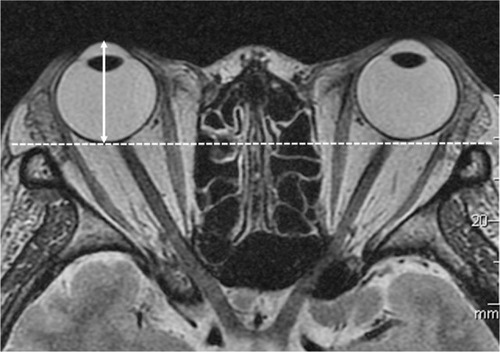
Figure 2 Volume measurement.
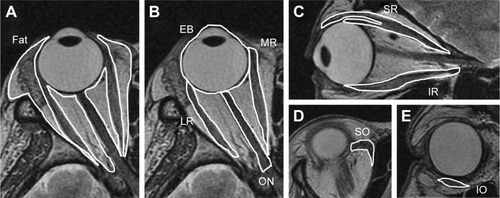
Table 1 Characteristics of patients with TAO
Figure 3 Diagram of patients who were included and dropped out.
Abbreviation: TAO, thyroid-associated ophthalmopathy.

Table 2 Changes in exophthalmos values and orbital tissue volume from before to after treatment with bimatoprost
Figure 4 Exophthalmos values.
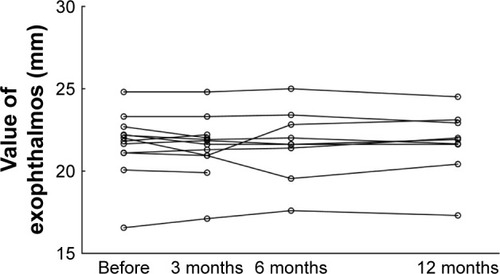
Figure 5 Orbital fat volume.
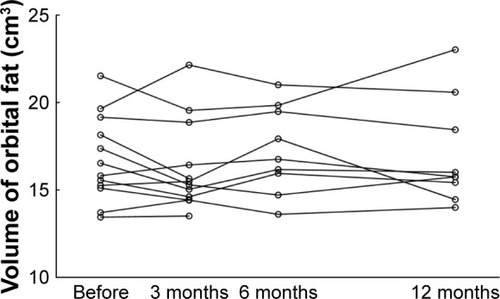
Figure 6 Extraocular muscle volume.
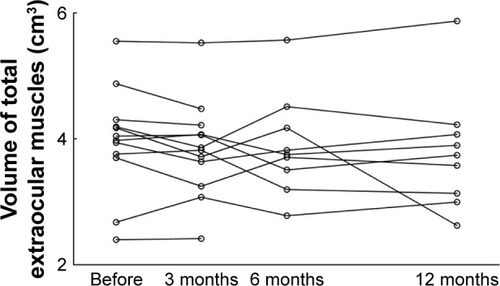
Table 3 Exophthalmos values and orbital tissue volume from before treatment to last MRI examination in patients who dropped out
